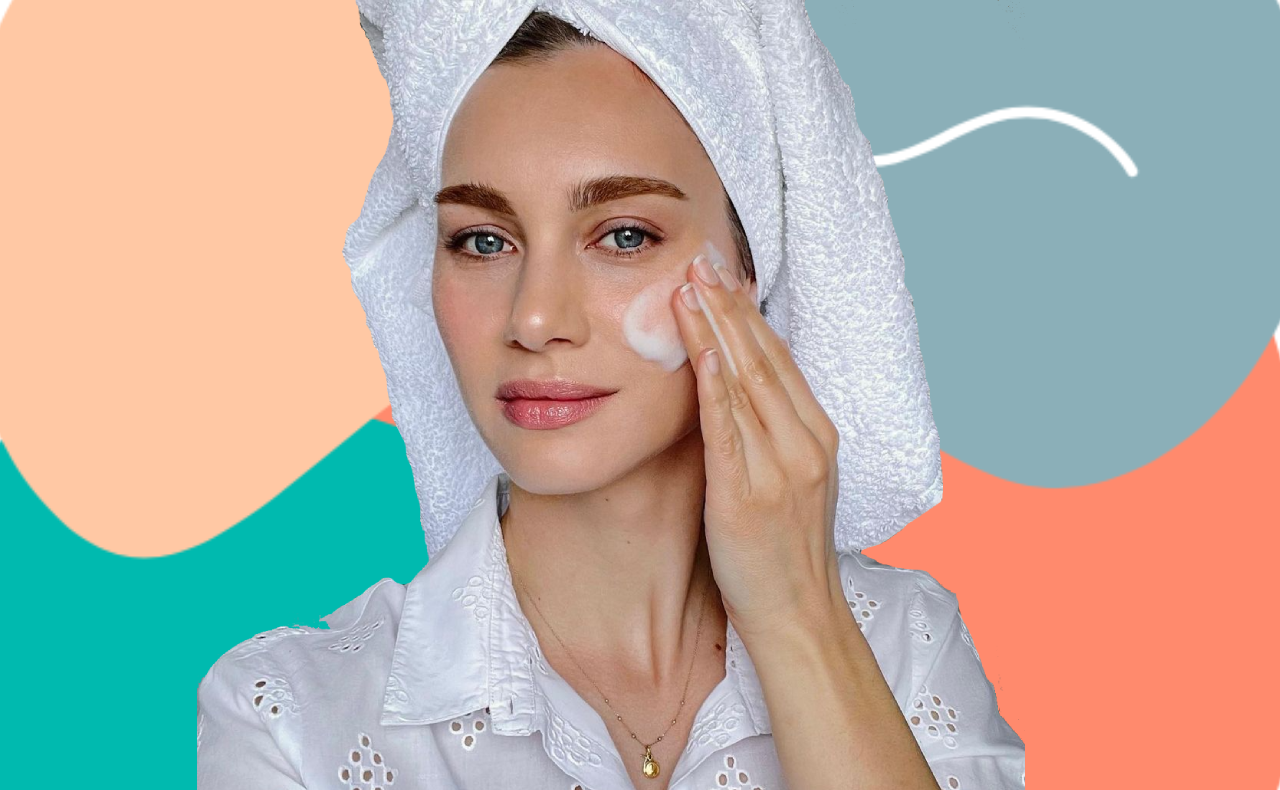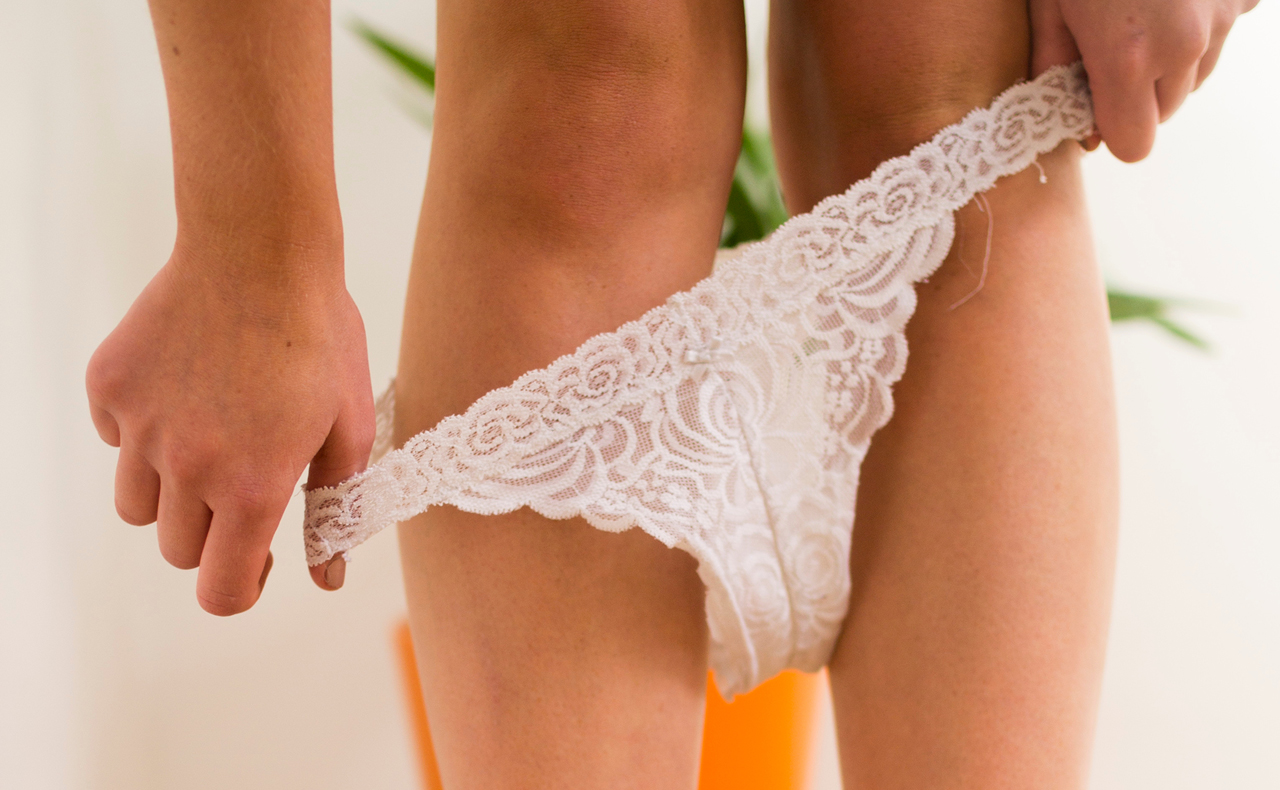GLYCOLIC ACID
Widely regarded as the holy grail of acids, glycolic acid can be used to tackle most skin ageing gripes including fine lines, pigmentation, lacklustre skin, uneven texture and dryness. The ultimate exfoliator, it sloughs off dulling dead skin cells and improves cellular renewal revealing a youthful, radiant complexion. Found in everything from peels and moisturisers to body lotions and serums, it’s the AHA with the smallest molecular size meaning it’s able to penetrate the skin easily and yield the best results. Glycolic can be used daily—though, as with all acids, follow the instructions religiously and ease your skin in. Most experts advise introducing acid every 2-3 days to start with, building up to daily use over four weeks. Due to the low pH of AHAs, it’s not unusual to experience a light tingling sensation when applied.Find it in:Elucent Anti-Ageing Night Moisturiser and Dr. LeWinn’s Reversaderm Cellular Regeneration CreamSALICYLIC ACID
As the main player in beta hydroxy acids (BHA) realm, salicylic acid has the weight of the world—aka the pressure to decongest our skin—on its shoulders. It’s able to deliver thanks to a molecular structure that makes it oil-soluble, allowing it to deep-dive into congested pores, nixing blackheads and reducing breakouts. A hero ingredient for those battling adult acne, it’s become the MVP for oily skin types and also summer skin routines, too. Why the seasonal switch? Salicylic acid can cut through sebum, oil and sunscreen, providing a deep pore purge.Find it in: Paula’s Choice Skin Perfecting 2% BHA Liquid ExfoliantLACTIC ACID
Another AHA, lactic acid offers a gentler form of chemical exfoliant with added moisturising benefits—thanks to the fact that it’s derived from milk. Not to be confused with lactobionic acid—a mild and minimally-invasive skin resurfacer from the polyhydroxy acid family—lactic acid still packs a punch for a sensitive skin-friendly acid. Its principal objective is to reveal clearer, more radiant skin. Some skincare relies exclusively on lactic acid, others up the AHA ante by teaming lactic acid with glycolic for a turbo-charged anti-ageing hit.Find it in: Dermalogica Gentle Cream Exfoliant and Synergie Skin Blem-XFERULIC ACID
Leading the charge in the ‘other acids’ category—the one someone forgot to come up with a catchy acronym for—is ferulic acid. A powerhouse antioxidant, it’s found in plants, vegetables, nuts and seeds. Proven to fight and reduce free-radical damage when applied topically, it’s a no-brainer addition to your anti-ageing skin routine. Suitable for all skin types, with the exception of the hypersensitive, you can often find ferulic acid paired with retinol for a 360-approach to ageing—FYI you should never use retinol with AHAs or BHA. The two don’t mix and cause redness and irritation when used together.Find it in: SkinCeuticals C E FerulicHYALURONIC ACID
The ‘acid’ in hyaluronic acid (HA) is a little deceiving. Exempt from any of the exfoliating/skin cell dissolving qualities that you’ll find with AHAs and BHA, HA instead tackles hydration. A natural humectant, it’s hailed as a superior ingredient for its ability to hold 1,000 times its weight in water. This moisture-binding becomes particularly beneficial as you age and skin loses its ability to hold moisture. Used in skincare to restore moisture, firmness, plumpness and suppleness, hyaluronic acid is also routinely added to cosmetics to boost hydration, plump and smooth fine lines and wrinkles.Find it in: La Roche-Posay Hyalu B5 Hyaluronic Acid Anti-Ageing SerumMain image credit: @chey_maya
Do you use any acids in your rouinte? If so, which do you like?





Can’t be without my AHA toner from The Ordinary
Still scared of acids with the exception of hyraluronic and a mild lactic. My sensitive skin can’t take it.
I have used all except for ferulic, have heard lots of good things about the C E ferulic, definitely something I’m keen to try at some point
Yes! Give me all the acids! Never without at least one in my routine.
Ya definitely! Daily. Glycolic, lactic for sure…the rest here and there if found in products are a bonus.
Most of the Skincare products that I am using have one or more of the acids listed above including hyaluronic acid.
I know that I like to keep a youthful complexion as long as possible.
I use Glow Recipe Watermelon Sleeping Mask once or twice a week. It contains glycolic acid and lactic acid.
Too many steps there to remember.
I like hyaluronic acid , I’m using other products that contain some of these in their ingredients list as well.
Finally a clear distinction
I love acids. They always seem to give me the best results for my skin. Great simple article that gives good information
The only 2 acids I haven’t touched on this list are glycolic & ferulic, mostly due to having sensitive skin that can react to things (although I confess that I didn’t know that ferulic acid isn’t good for hypersensitive skin, which I sort of have). I have come to enjoy using a lactic acid peel in my routine though (Goldfaden MD Fresh A Peel FTW), but I only use it once a week due to my skin & because it’s damn expensive (worth it though).
Glycolic acid is my favourite but I also really like salicylic acid. The only one I haven’t tried is ferulic acid
Im using Neutrogena Products with Hyaluronic Acid. The cleanser, serum and moisturiser. My skin loves it
I love acids but lately have found my skin is more sensitive to them. Lactic acid makes the most difference to my skin.
LOVE! I use Dennis Gross peel pads. So good. Much gentler than a manual exfoliant.
A very informative article, thanks for sharing BH.
I had never heard of Ferulic acid …. learnt something new today 🙂
I’m zit-prone, so I love salicylic acid. I’ve got some serums to get through at home, then I’m going to get some ferulic acid.
Super helpful info in this article.
I am scared of using acid on my face!
Yes ‘acid’ sounds too strong for my sensitive skin
I’ve found the S acid to be very beneficial for my oily blemish prone skin type. It seems to keep my skin clear of blemishes.
I was using glycolic for a while but found it was too drying for me. I´ve since switched to lactic acid and that seems to be better for my skin, much more gentle. The results with lactic are less brightening, but I still find it smooths and exfoliates well.
I will add these to my Wishlist this Xmas
My skin is in the best condition since I’ve started using acids.
Loved that episode of SATC. Samantha had a chemical peel and her face turned bright red.
I’ve never thought of using acids before until I was chosen for a trial team using GLYCOLIC ACID and have to say I fell in love with it.
Interesting…
I have rosacea on my face so I don’t think I should be using an acid on it.
I think I need some serious skin care advice
A great article to read.
I was using a glycolic cleanser from Mario Badescu and it was too drying for me. I think it is much better suited to oily skin, I wouldn’t recommend it for dry skin.
Great breakdown of all the acids
GA was too harsh for my skin but it also depends on the strength of the product, I don’t need SA, I’m already using HA and my skin loves it, and I’d like to try the FA.
The Ordinary has products for each one of these acids at a very affordatble price.
I love a combination of AHA, BHA and PHA
I use salicylic acid to spot treat when I get pimples. I use hyaluronic acid on a regular basis in my night cream.
I wasnt aware that there are so many beneficial acids!
YES! The Ordinary is great for cheap, effective skin actives. My husband uses their niacinamide and zinc for oily skin, and I love their caffeine solution for dark circles. Their retinoids are also fab.
I’m a big fan of Glycolic Acid! I understand it isn’t for everyone but it works for me, I use Skinstitut cleanser and scrub and I use a toner from Mario Badescu, I can’t recommend these products enough! I do have oily skin and it keeps it under control without drying it out
I use all of these in one form or another except ferulic acid – used to, but haven’t been using it for a while
Such a great article very informative
I mostly use products with glycolic acid, but some of them make my face feel sticky.
I use hydrolic acid and glycolic acid in my routine and have seen improvements in my skin texture. My skin is also more glowy than normal
Although I have read many positive reviews regarding Skinceuticals C E Ferulic, it’s out of my price range.